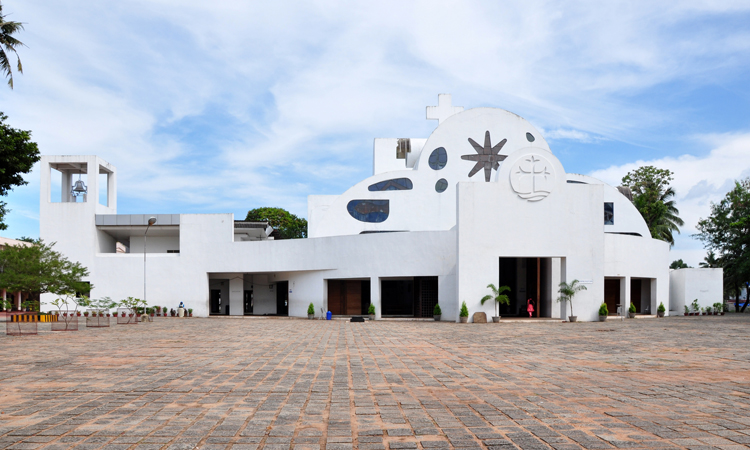St Paul Church
St Paul Church

St Paul Church:
By the year 1827 the College and the Church were already in a pretty devastated state. This was finally completely demolished in 1829 by the Goverment except for the façade and the material was taken to Panjim to be utilized for new constructions. The remaining arch of the façade of the Church lies on the road from Old Goa to Ponda just a short distance from the Gandhi Circle, on the left side of the road among a cluster of trees.
It was started as a seminary of the Holy Faith for training young converts by two priests Diogo de Borba and Miguel Vaz who had established the Santa Fé confraternity. The construction began in November 1541 and completed on January 25, 1543, the day of feast of Conversion of St. Paul to whom the church was dedicated.
The College of St Paul was among the largest in India. Beside elementary instruction, higher education in Music, Latin, Arts and sciences was also imparted, capped with lectures in Philosophy and theology. Even the degree of Master of Arts and the Doctorate were conferred here.
In 1548, when Fr Borba passed away, the seminary was handed over to St. Francis Xavier who had recently arrived in Goa and was residing at the Hospital Real (Royal Hospital). The College of St. Paul's was the first house of the Jesuit Order in Goa. After some years, the old college buidling was demolished and the two separate buildings were constructed, Both connected to each other by a passage. Seminário de Santa Fé was for the students and the other building called Colégio de São Paulo was for the residence of the Jesuits.
In 1556, King Dom Joao III issued an ordinance by which the College was opened for secular studies. By 1568 around three thousand students from India and other parts of Asia were enrolled at the college. Besides the Seminary of Santa Fe, the following institutions were attached to the College: a novitiate, a professed house, a hospital and a house for the newly converts. The College had a large library and the first printing press in Asia was set up in this College, through which came the first printed publications.
In 1560 the Church was demolished on account of its weak condition and the foundation stone for a larger Church with three naves was laid on 25th January, 1560. It was twenty years later that one of the walls developed cracks and three arches of magnificent dimensions covering the existing road were built as support under the supervision of Jesuit João de Faria. As such it was popularly known as Sao Paulo dos Arcos (St. Paul of Arches).
It was for the first time that Santos Passos (dramatic representation of Passion of Christ) were introduced in Asia in this institution. The penitential procession was characterized by public self-flogging. There were booths erected in different places to provide first aid. The tradition of spreading or throwing flowers on the occasion of the feast of Our Lady of Mount originated here. Above all, the greatest honour that this institution received was the presence of Francis Xavier whenever he was in Goa and the first public exposition of his incorrupt body after his death. The martyrs of Cuncolim were also buried here.
In 1570 there was an epidemic and the Jesuits acquired some houses belonging to Pedro de Faria on the hill of Nossa Senhora do Rosário in 1578 for the residence of the Convalescents. The complex was named as Colégio de São Roque (1580). All the departments of studies from College of S. Paul were transferred to College of S. Roque which was also known as Colégio de São Paulo-o-Novo (St. Paul, the New).
The construction of a new building in this place met with a stiff opposition of Augustinians and nuns from Santa Mónica. The Jesuits had some other enemies too, who set fire to the building four times between 1591 and 1675. Once, the Rector of the Colégio de Dom Jerónimo Xavier, a relation of Francis Xavier was the victim of these flames. There was a surplice of Francis Xavier deposited in a silver box in this College which was later taken to Basilica of Bom Jesus.
Distance Calculator
Stay updated
Subscribe to our newsletter to get early notifications of our great offers and promotions!
